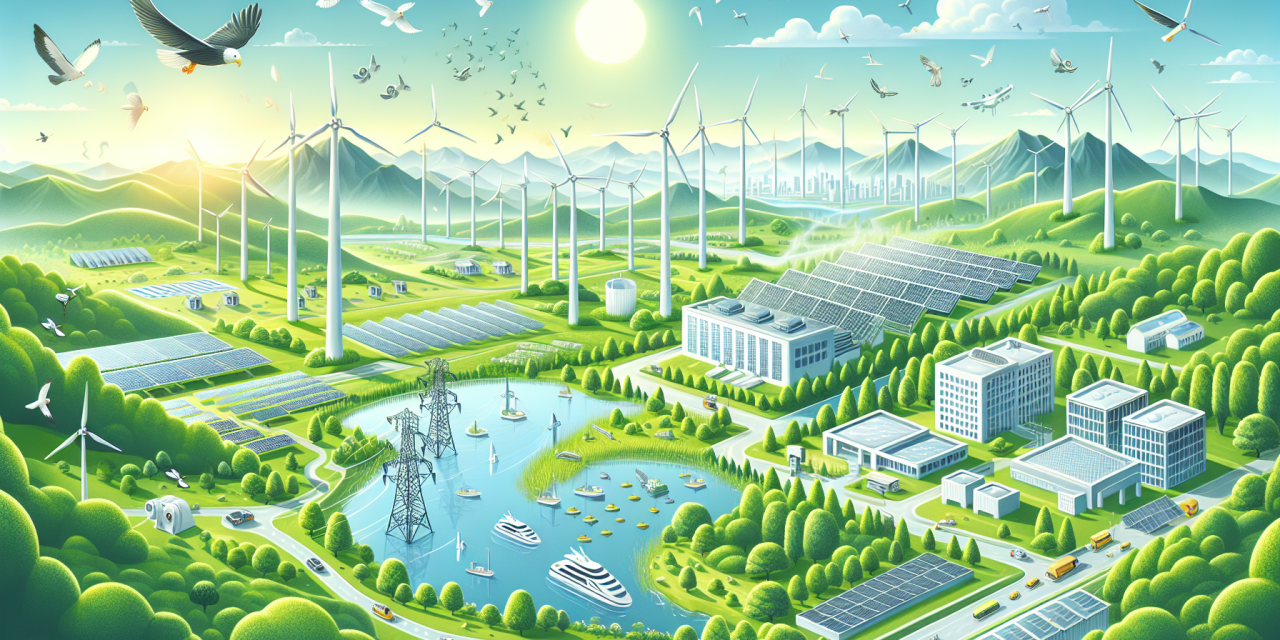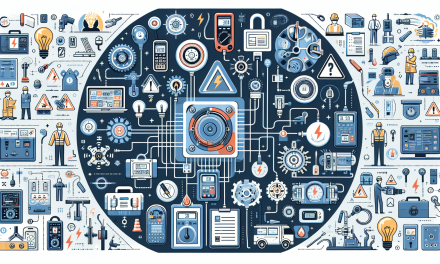Table of Contents
- Introduction
- Importance of Renewable Energy
- Environmental Impact of Renewable Energy
- Economic Benefits of Adopting Renewable Energy
- Technological Advancements in Renewable Energy
- The Role of Policy and Regulation
- The Future of Renewable Energy
- Frequently Asked Questions
- Conclusion
Introduction
In recent years, the significance of renewable energy sources has surged tremendously. As societies face the challenges of climate change and diminishing natural resources, the shift towards renewable options offers a promising solution. Various forms of renewable energy, such as solar, wind, hydroelectric, and geothermal, continue to evolve, bringing new opportunities and solutions to energy consumption and environmental sustainability.
Importance of Renewable Energy
Renewable energy plays an indispensable role in mitigating climate change. As fossil fuels deplete, the necessity for more sustainable energy sources becomes increasingly evident. The transition not only impacts the environment positively but also creates a path towards energy independence and security. Moreover, it enhances the resilience of energy systems against disruptive weather events and geopolitical tensions.
Global Trends in Renewable Energy Adoption
Countries around the world are investing in renewable energy infrastructure. This global shift underscores the urgency for sustainable alternatives. According to various studies, global investments in renewable energy have soared, showcasing a concerted effort to enhance sustainability. As a result, many nations have articulated ambitious renewable energy targets, aiming to meet a significant portion of their energy needs through these sources.
Environmental Impact of Renewable Energy
Switching to renewable energy sources offers substantial environmental benefits. For instance, solar and wind energy systems emit negligible greenhouse gases compared to traditional fossil fuel energy systems.
Reducing Carbon Footprint
One of the most notable impacts is the drastic reduction in carbon emissions. Utilizing renewables significantly lowers the carbon footprint. Additionally, renewable energy helps decrease air pollutants that contribute to health hazards and environmental degradation.
Conserving Natural Resources
Utilizing renewable energy sources conserves natural ecosystems. Unlike conventional energy sources that often lead to habitat destruction, renewable systems are less intrusive, preserving biodiversity. Maintaining these natural systems is vital for ecological balance and offers long-term benefits for future generations.
Economic Benefits of Adopting Renewable Energy
The transition to renewable energy sources isn’t just an environmental necessity; it also brings numerous economic benefits. These advantages ripple through communities and nations, fostering growth and innovation.
Job Creation and Economic Growth
Investing in renewable energy leads to job creation in various sectors. From manufacturing to installation and maintenance, the renewable energy sector provides ample employment opportunities. Furthermore, as this industry grows, it bolsters local economies and leads to economic diversification.
Cost Savings and Energy Independence
Renewable energy resources often lead to decreased energy costs over time. Although initial setup costs might be high, the long-term savings and avoidance of fuel price volatility provide significant financial benefits. Moreover, renewable resources contribute to energy independence, reducing reliance on imported fossil fuels.
Technological Advancements in Renewable Energy
The evolution of technology in the renewable energy sector continually enhances efficiency and accessibility. Innovations in solar panels, wind turbines, and energy storage systems exemplify how technology drives progress.
Smart Grid Technologies
Implementing smart grid technologies optimizes the performance of renewable energy systems. These technologies improve energy efficiency by managing and monitoring energy distribution in real-time. Consequently, smarter systems facilitate the integration of renewable energies into existing grids.
Battery Storage Solutions
The advancement of battery storage systems represents a significant breakthrough for renewable energy. Enhanced storage capabilities ensure a consistent energy supply, even when generation is low, such as on calm or cloudy days. This reliability fosters broader adoption of renewable technologies.
The Role of Policy and Regulation
Effective policies play a crucial role in supporting the development and implementation of renewable energy. Governments must advocate for frameworks that incentivize renewable energy adoption. This includes subsidies, tax credits, and regulations promoting cleaner energy solutions.
International Cooperation and Local Initiatives
Collaboration on international levels can bolster the renewable energy movement. Numerous countries engage in partnerships to share knowledge and resources. Simultaneously, local initiatives focusing on community-based renewable projects significantly contribute to the global goal of sustainability.
Community Engagement and Education
Raising awareness about the benefits of renewable energy is essential. Educational initiatives encourage communities to embrace renewable technologies. Through information sharing and practical workshops, individuals and organizations can learn how to implement these technologies effectively.
The Future of Renewable Energy
Looking ahead, the future of renewable energy appears bright. Increasing advancements in technology and growing awareness surrounding climate change may lead to more significant shifts toward renewable energy sources. The transition appears to be a pivotal solution for a sustainable future.
Innovative Energy Solutions
Innovation continues to fuel growth in renewable energy. New solutions, such as hydrogen fuel cells and bioenergy, further diversify the energy mix. These developments enhance the potential for achieving energy goals across various sectors, balancing production and consumption.
Global Collaboration and Initiatives
As nations recognize the urgency of climate action, global collaboration becomes increasingly important. Collective efforts can amplify the impact of renewable energy implementation. For example, initiatives like the Paris Agreement illustrate a global commitment to reducing emissions and transitioning to sustainable energy sources.
Renewable Energy Sources Impact and Benefits Course
For those interested in a deeper understanding of the potential benefits associated with renewable energy, a focused course on this topic can provide valuable insights. The Renewable Energy Sources Impact and Benefits Course offers comprehensive coverage of how these energy sources can be harnessed for economic and environmental advantages.
Frequently Asked Questions
1. What are the main types of renewable energy?
The primary sources of renewable energy include solar power, wind energy, hydroelectric power, geothermal energy, and biomass. Each type utilizes unique technologies to convert natural resources into usable energy.
2. How does renewable energy contribute to job creation?
The renewable energy sector generates jobs through various stages, including research, development, manufacturing, installation, and maintenance. As demand for renewable technologies increases, so does the need for a skilled workforce to support these initiatives.
3. What challenges does renewable energy face?
While the potential of renewable energy is vast, challenges remain. Issues such as intermittent energy generation, integrating these sources into existing energy grids, and securing funding for large-scale projects need to be addressed. For more on this, check out this article on overcoming renewable energy integration challenges.
4. How can individuals contribute to renewable energy adoption?
Individuals can contribute by adopting renewable technologies, advocating for supportive policies, and participating in local initiatives promoting sustainable energy. Understanding energy management is also crucial; thus, resources like energy management systems offer practical guidance.
Conclusion
The impact of renewable energy sources transcends environmental benefits, significantly contributing to economic growth, technological advances, and job creation. By embracing these sustainable alternatives, societies can pave the way toward a greener and more sustainable future. Investing in education is essential for widespread adoption of renewable practices, as illustrated in resources like Mastering Electrical Power Systems and Unlocking the Essentials of Electrical Power Systems for Non-Engineers. By working together and leveraging renewable resources, a sustainable future becomes attainable.





